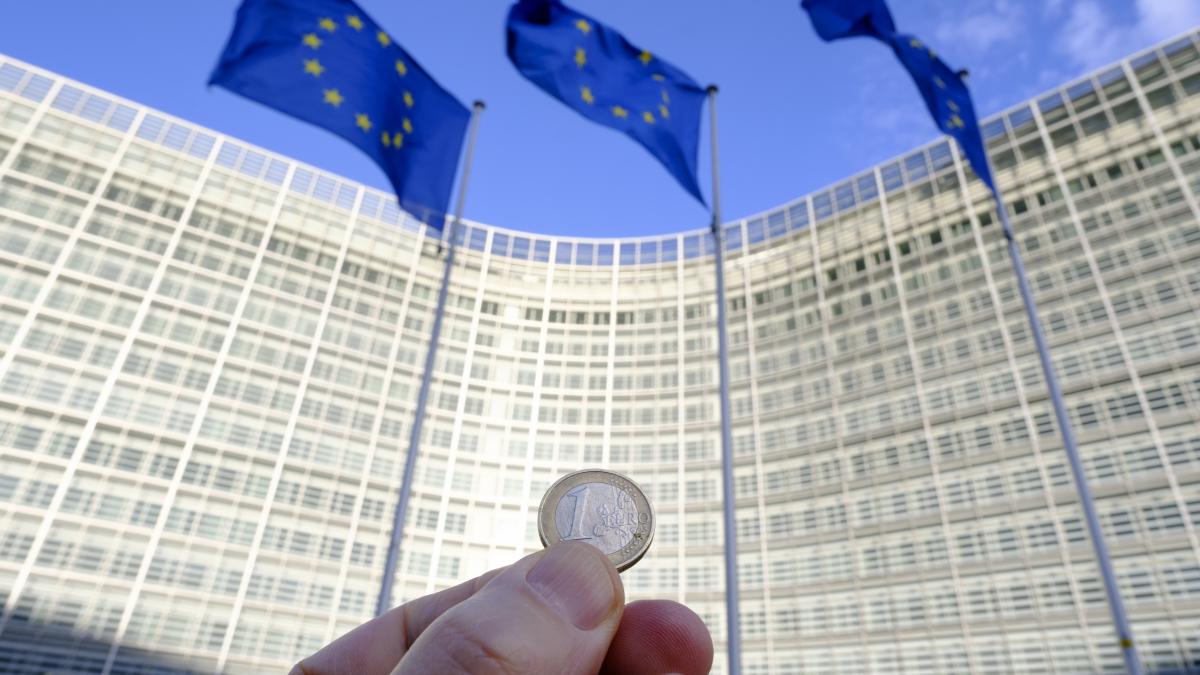If it doesn’t trade, is it really marketable debt?
Europe’s bond markets are essential infrastructure, just like the power grid.

When it comes to encouraging fiscal discipline, euro-area policymakers want the market to be part of the solution. This will not succeed until they make peace with the idea that, while it is their job to set conditions and incentives, it is not their job to dictate prices and spreads. Within the environment that policy creates, market discipline is something the market does to itself, not something a government imposes when it disapproves of national choices. Governments need to get used to market-set prices as a source of strength and information, not just a source of risk.
Since the start of the euro crisis in 2010, the European Union has taken tentative steps toward accepting this reality. But every step forward has come with trepidation and scepticism. The EU deserves a lot of credit for adapting its institutions and creating new ones so that all of its members can preserve market access. It is changing its fiscal rules so that member states will take more ownership of managing their financial health. Now it needs to accept the daily operations of the market itself.
Historically, market trading has been viewed as synonymous with risky speculation. This is like viewing electricity solely as a fire hazard. Yes, sparks can start fire, and fluctuating prices can get dangerous. But day to day, having a power grid – or an active capital market – is necessary infrastructure for modern life. Embracing a market where prices rise and fall is not the same thing as endorsing a free-for-all. It will require policymakers to reframe their ideas of pragmatism and risk.
While the euro area has progressed extensively in its willingness to join forces in a crisis, markets know the EU is not really a joint issuer despite the size of its NextGenerationEU recovery plan. Ratings agencies consider it a supranational, not a sovereign, and assess it based on the creditworthiness of its top members rather than as a whole. Yields continue to be higher than fundamentals might suggest. For example, Germany regularly fields challenges to the EU’s ability to borrow jointly at all. These challenges fail, but not before reminding investors and voters that the euro area keeps its finances in national compartments when push comes to shove.
Widening spreads and tumultuous market conditions all year have made policymakers newly attentive to the reality that sovereign debt from different euro-area countries trades at different rates. The problem is many ideas for trying to solve it risk exacerbating fragmentation rather than bringing the bloc together. Recent proposals include creating a European debt buying agency; duplicating and de-stigmatizing a never-used precautionary credit line system; and generally trying to revive the magic of Mario Draghi’s “whatever it takes” moment.
Establishing fixed-income capital markets
There’s a missing element at the heart of Europe’s financial system: trust in the market. What if every euro-area country could sell debt at varying price points with an expectation that it would trade regularly, in all weather? Buy and hold should not be the only option. The goal of a debt auction should not be just for the European Central Bank or a pension fund to buy a bond and wait until it matures. It should be to form a benchmark yield curve and anchor an entire ecosystem of fixed-income capital markets. If a ‘liquidity crisis’ is defined by a lack of cash, or by loss-averse securities holders facing off against rapacious fire-sale speculators, then a liquid market should be defined by a healthy mix of buyers and sellers in all conditions.
The euro system knows this, on some level. In 2015, the ECB set up a securities lending programme like the longstanding offerings of the US Federal Reserve. These programmes are essential bond market infrastructure and keep the market going in the face of all kinds of technical challenges. The long-standing debate over a European safe asset also acknowledges the truth that the euro won’t be a serious international currency until it has one, at scale. The historic joint borrowing enabled by the NextGenerationEU pandemic recovery programme brought that vision so much closer. But as long as it is limited and temporary, Europe will not be able to close the deal.
The disinterest in market borrowing starts at the top. Even at the height of the euro crisis, a financial flashpoint dominated by lack of market access, European policymakers continued to rail about the perils of speculation. Germany is famous for not taking meticulous care of its primary market, instead giving itself ample leeway to just reduce supply if the bids failed to show up. The market has historically indulged them, as in 2011, when Germany failed to place its full offering in two long-term debt sales in a row. If any other major developed country couldn’t sell all the debt it planned, the ratings agencies might start looking into default. But as with trade surpluses and fiscal guidelines, Germany has got off with a shrug and a promise. The bonds make their way into the secondary market later, the world keeps spinning. The secondary market still gets the bonds as German bond trading is dependable enough that the market can absorb these bonds either at auction or at its leisure later, and pricing adjusts in routine and non-destabilising ways.
Without trading, there is no liquidity. Without liquidity, there is no market. ECB researchers in 2017 found that more participation in primary market sales leads to smoother secondary market trading – notably a process that works better when market volatility is otherwise higher. When public debt sales are regular, predictable and designed with follow-on trading in mind, the market-makers make markets, and everyone benefits.
Balancing public and private funding
A strong and steady secondary market is the key to a strong public borrowing scheme, as documented in Bruegel’s 2021 assessment of the NextGenerationEU programme. The European Commission has admirably sought a balance between encouraging long-term investors, who provide primary market demand and a price anchor and making sure there is enough secondary market liquidity for smooth trading. Its investor base as of October 2022 is 34% fund managers, 25% bank treasuries and 21% central banks and other official institutions; a mix of pension funds, insurance companies, banks and hedge funds make up the rest. Likewise, the EU has done an effective job of building a primary dealer network, selling its debt at auction and through syndications, and monitoring follow-on trading. It will not, however, reap the true benefits of a mature public borrowing programme unless its efforts continue at scale.
On the private-sector side, policymakers are at least willing to talk about how broader market operations would help the general economy grow. Capital markets union may not be progressing much, but there is at least a top-level consensus that more and better trading is part of the path forward. Illiquid markets have more price volatility, which can be disruptive. For the public sector, overall, the philosophical shift is taking longer to happen, despite the desire of euro-area politicians to catch up with the dollar and its deep and liquid US Treasury market. Even relatively pro-debt economists and policymakers seem to be struggling with the shift from buy-and-hold to actively encouraging trading.
Consider this year’s call from Italian and French leaders Mario Draghi and Emmanuel Macron to adjust the euro area’s debt rules to allow for more public investment spending. They gave a nod to a December 2021 proposal by Francesco Giavazzi, Veronica Guerrieri, Guido Lorenzoni and Charles-Henri Weymuller as part of their case for more borrowing. The heart of the plan aims to take the burden of buying sovereign debt off the ECB – but not by trusting the market. It suggests creating a European Debt Agency to take on sovereign bonds instead. Rather than printing money to do it, as the ECB has done through its monetary policy operations, this new agency would instead go to the markets directly. It would create an intermediary between investors and individual countries and provide a new euro-denominated safe asset. As a bonus, it could offer a new mission for the European Stability Mechanism, currently reduced to a warehousing role for the debt it issued during the euro crisis and seeking a new mandate. What this plan lacked was a sense of what would happen to the secondary market after sovereign debt was sucked up and out of circulation, as well as what effect its own borrowing would have on market access.
The EU’s current joint borrowing programme, the NextGenerationEU recovery programme, aims to explicitly ‘crowd in’ investment and borrowing at the national level. There seem to be few safeguards to keep the various proposed new debt agencies from crowding out other sovereign issuers. Furthermore, by limiting the amount of sovereign debt in the markets, one can imagine they could depress liquidity and therefore hurt the balance sheets of the countries ostensibly being helped.
This is the big shift that Europe has yet to make: that more debt can be safer debt, at least when it comes to the world’s major currencies. A permanent national debt is a gift, as the US has found since the days of Alexander Hamilton. US debt managers strive to protect the secondary market, not eliminate it – in fact, during the height of the Alan Greenspan era, fears were not that the US would issue too much debt but that it might run too much of a surplus. A country is not a business, and it does not need to balance its books. On the contrary, its entire job is to marshal credibility so people believe in its banks and its borders. For small, poor countries, credibility is in short supply. For the world’s largest consumer market, it ought to be abundant.
The EU does not need yet another issuer of high-quality quasi-sovereign debt. Instead, it needs to encourage the issuers it has, so they can trade freely and at the scale needed to provide stability in global financial markets. It needs to have confidence, so the markets can have confidence too.



